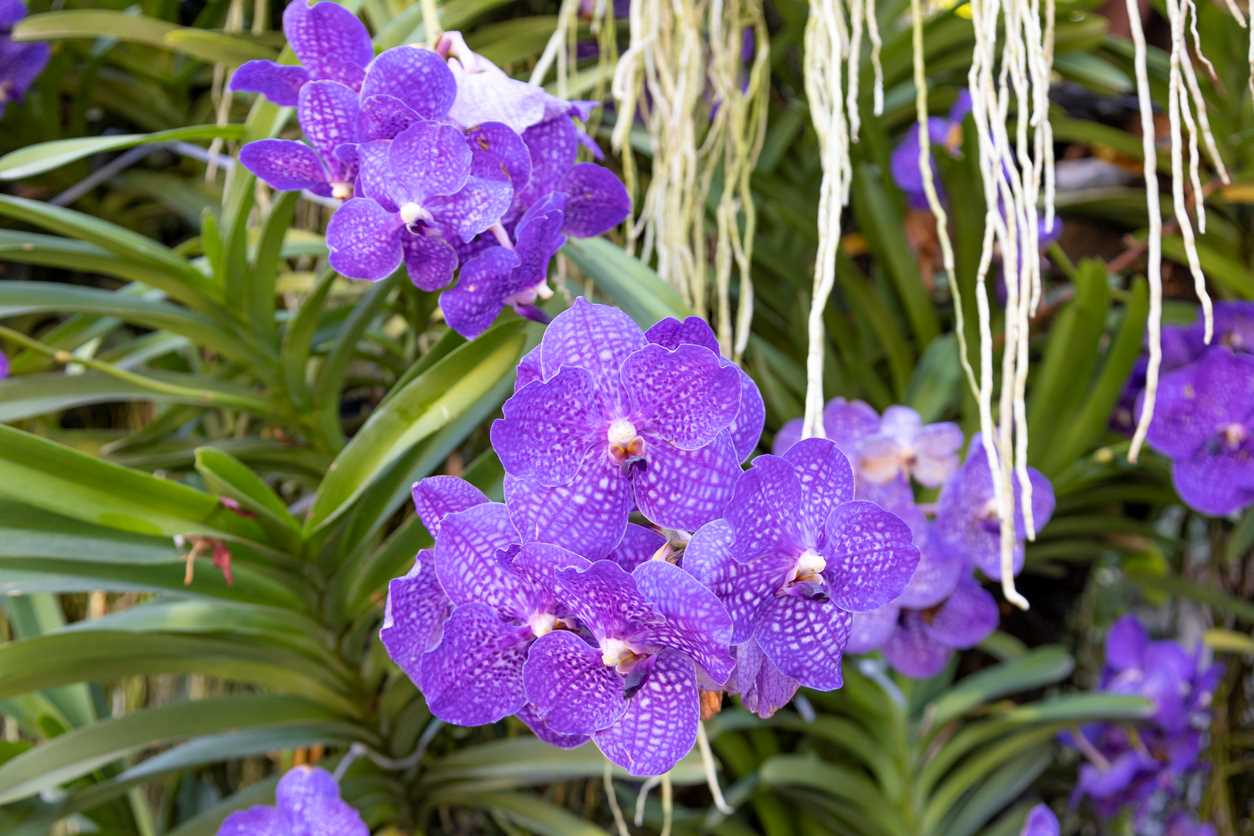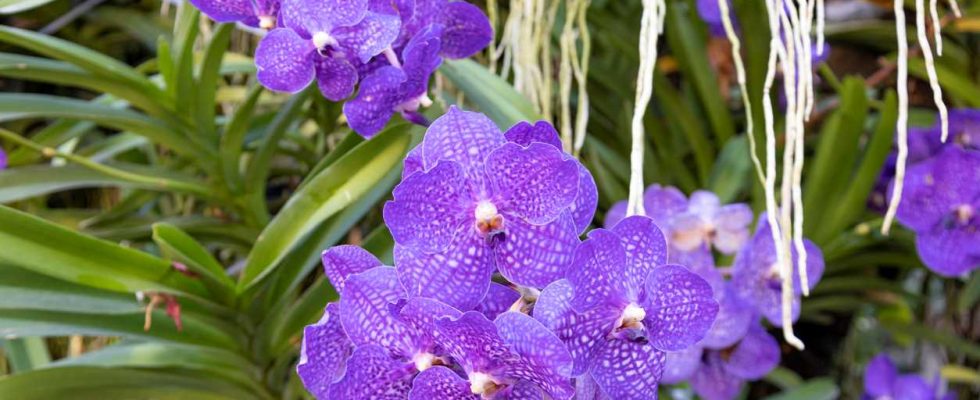
The Vanda orchid
Orchids of the genus Vanda, which counts more than 60 species, come straight from Southeast Asia. They are epiphytic plants which, in their natural state, grow in a warm and humid climate.
The term “epiphyte” means that it is plants that grow on other plants and not in the soil. And this is the case of the Vanda orchid, since, in nature, it grows anchored in the bark of a tree which serves as a support and pantry. What differentiates Vanda orchids from Phalaenopsis, which we are all familiar with, is the spectacular range of colors that the flowers, as well as the foliage, can display.
- Colors : if you like bright colors, the Vanda orchid will delight you with its large flowers which can be blue, bright pink, yellow, purple, lilac, etc., but also white. But beyond bright colors, certain species and varieties even offer patterns on the petals, such as spots, stripes, veins, which create shades of color.
- Foliage : it is characterized by long and narrow leaves, arranged in a fan.
If you are convinced by the Vanda orchid, continue reading to find out how to grow and pamper it so that you can enjoy its tropical beauty for many months to come.
Growing the Vanda orchid
The Vanda orchid is a plant that can live up to 20 years and grow very large. You can grow it indoors or outdoors, either in a pot or without, which she prefers. It can simply be suspended. If the growing conditions suit it and satisfy its needs, it can flower twice a year. Let’s see how to meet all his needs.
Watering requirement
Whatever the cultivation method, the two rules to respect are the following:
- Avoid stagnant water.
- Do not water from above, as you risk leaving water in the heart of the rosette of leaves.
Aerial culture
If you decide to grow your Vanda orchid without a pot, that is to say in aerial culture, you will need to spray water on its roots every day and soak the root mass twice a week in water at room temperature and non-limescale. You can leave it to soak for between 1 hour and 1 hour 30 minutes.
Pot cultivation
If you have opted for growing in a pot, you must carry out regular watering.
The orchid fears excess water or stagnant water which causes its roots to rot. This means that you must remember to empty the cup after each watering and only water when the substrate begins to dry out.
Vase cultivation
Finally, if you grow your vanda in a vase, you simply need to fill part of the container so that the roots soak in water for about 1 hour, once a week. At the end, remember to empty the water from the vase. A micro-climate will thus be created inside the container thanks to the humidity rejected by the plant. The advantage is that you won’t have to spray the plant.
Outdoor cultivation
If on sunny days you decide to put your plant outside, it will be necessary toincrease the frequency of watering, because the roots will dry out more quickly. You will therefore have to be more vigilant and carefully monitor the condition of your plant.
Brightness requirement
As the Vanda orchid needs a lot of light, it is important to install it in a bright location, but without direct sunlight. You can therefore install it near a window. In this case, make sure that the sun’s rays do not hit it directly, otherwise its foliage risks being burned. You can also put a curtain in front of your windows for more peace of mind.
Temperature
Remember that in its natural state, the Vanda orchid grows in a warm and humid climate. She therefore needs to rediscover the warmth of her origins. The ideal is to cultivate it in a room where the temperature fluctuates between 20 and 24°C. In any case, the temperature must not be lower than 15°C.
Fertilizer
Here again, we must not lose sight of the origins of the Vanda orchid: in the wild, it draws the organic nutrients it needs from the bark of the tree that hosts it and these nutrients are renewed non-stop. To restore these living conditions, you must therefore make regular fertilizer additions.
For greater effectiveness, it is recommended to soak the roots in water for half an hour before applying the fertilizer.
Repotting
The substrate is not necessary for the plant, there is no need to repot your Vanda orchid. On the other hand, you may need to install a stake to keep the plant upright, because its fan-shaped foliage can become very large and drag the plant downward.
After flowering
The main interest of this plant is its superb flowering. It is therefore important to help it flower and rebloom so that you can enjoy the spectacle of its flowers as often as possible. To do this, when the flowers begin to fade, wait until the stem has completely deflowered to cut it at the base, just above the leaves.
Then install your plant in a cooler place, but not below 15°, for a while to encourage new flowering.

